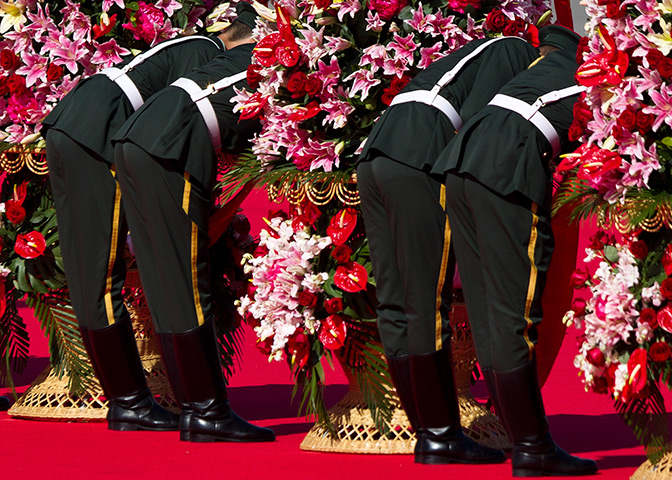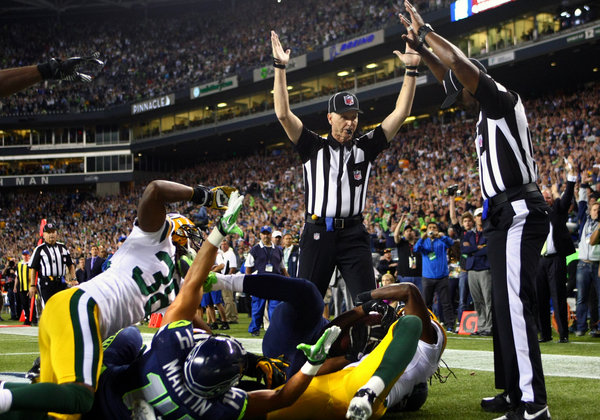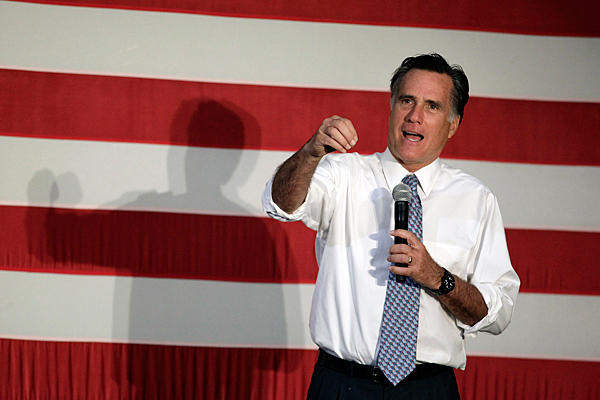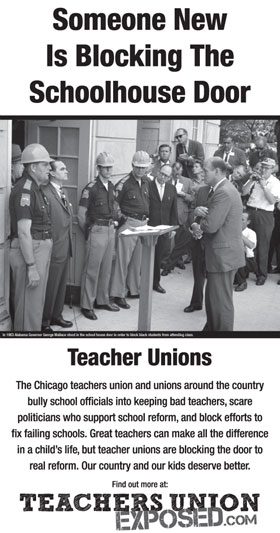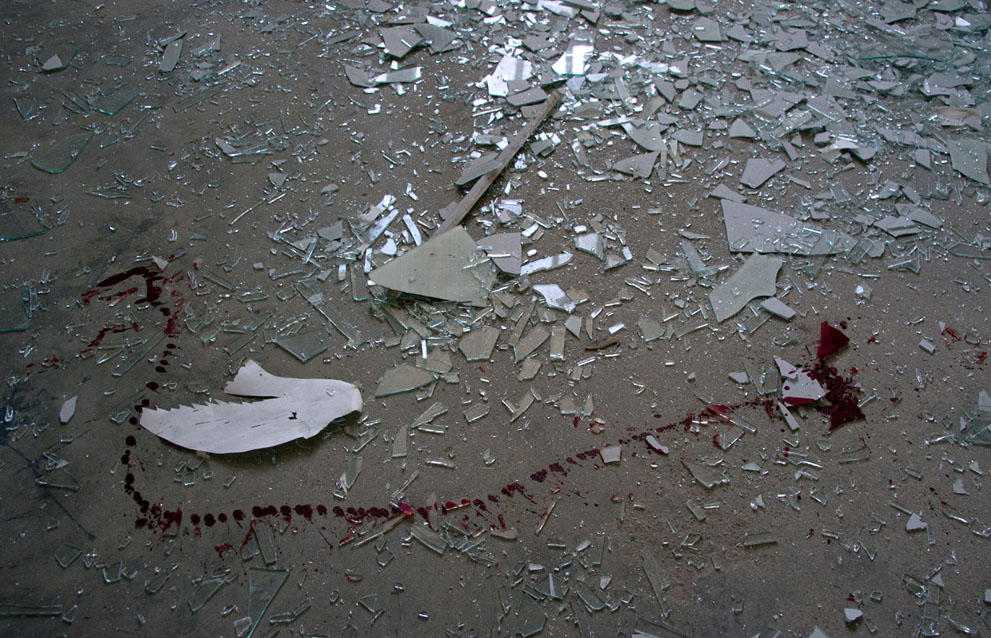Before concluding that the mass public is mesmerized by political spectacles, it might help to note that photojournalism includes a fair share of backstage shots. And some can be taken in broad daylight.
This image verges on the visual joke–just think of how you might caption it using the word “butt” or “ass” or otherwise going down that path. Jokes aren’t serious, by definition, but some very good photographers have not been above them, with Elliott Erwitt being the master of the genre. Erwitt’s example suggests that the photo above isn’t merely a joke, but something related to that: not quite a parody, but mildly comedic comment on a more conventional form.
But what is it that is being cut down to size? I think at least two stock images lie behind this photo. One is the image of goosestepping troops that symbolizes authoritarian regimes. (I’ve posted here and here on how these images are faring in the 21st century.) In the photo above, the conventional boots, arced legs, pointed toes, and uniformed entrainment are all present, but firmly planted on the ground and immobile instead of striding forward as disciplined menace-in-motion. And instead of seeing right arms swinging in unison while the left hold weapons (“arms”) upright, we see only legs and asses. Worse yet, instead of all heads cocked in the same tense direction, all eyes on the great leader at the reviewing stand, these guys are headless. Decapitated obedient bodies still symbolize the mass man and mechanized slavery of anti-communist demonology, but the image now is a long way from threatening. After all, we’re looking at the flower detail.
National Day provides plenty of more impressive images of troops marching in formation, heavy military equipment on display, and all the features once found in the Western press after every May Day. Those concerned about global security would rightly point out that the troops and weapons on display are real and receiving more funding every year, and that the event was held at Tiananmen Square, and perhaps any bemusement should be tempered accordingly. But militarization is a global problem in another sense as well, as it sucks up ever more resources despite the fact that war has becoming ever more unnecessary and stupid. Thus, spectators East and West need to be reminded that it’s one thing to enjoy the show and another to buy the whole package, and that those images of goosestepping troops help sell the package on both sides of the street.
So it is that the political spectacle itself may be another object of commentary in the photograph above. Instead of seeing only the staged performance, we are taken backstage to be reminded that it is just a show. Instead of seeing a display of power, we are reminded that the performance depends on ordinary people who are vulnerable in spite of their uniforms. It will still be a good show, but now we can keep it in perspective instead of seeing a National Security Threat in every parade and Escalation in every salute.
And just to gild the lily, I’ll put up one more photograph from the same role. This one seems the more direct parody, and a more direct put-down, but let’s wait a moment on that.
Now the goose step is revealed. Are you terrified? Of course not. The stride is limited by the soldier’s load, but more than that, they are carrying flowers, gigantic bouquets of flowers. On a carpet, no less. OK, Defense Department, can you match that? Do you have the latest intelligence on garlands? Are you prepared to fight a two garden war?
This is another version of a backstage shot in a public space: the photo positions the viewer as if in the wings while watching the actors march out onto the stage. The double vision of seeing them both backstage and on stage creates a slightly comical, skeptical frame for the event. And once again the joke turns serious. The better political vision in this image comes precisely from how the soldiers appear ridiculous. Would that all soldiers were so: that is, that all the troops were doing nothing but competitive displays for peaceful onlookers. Not great material for the video games, but one of the keys to the 21st century is figuring out how to turn military expenditures, and cultures, toward less lethal forms of service. So is is that marching in parades, at least if you are in the flower detail, might be an important military exercise after all.
Photographs by Andy Wong/Associated Press.
